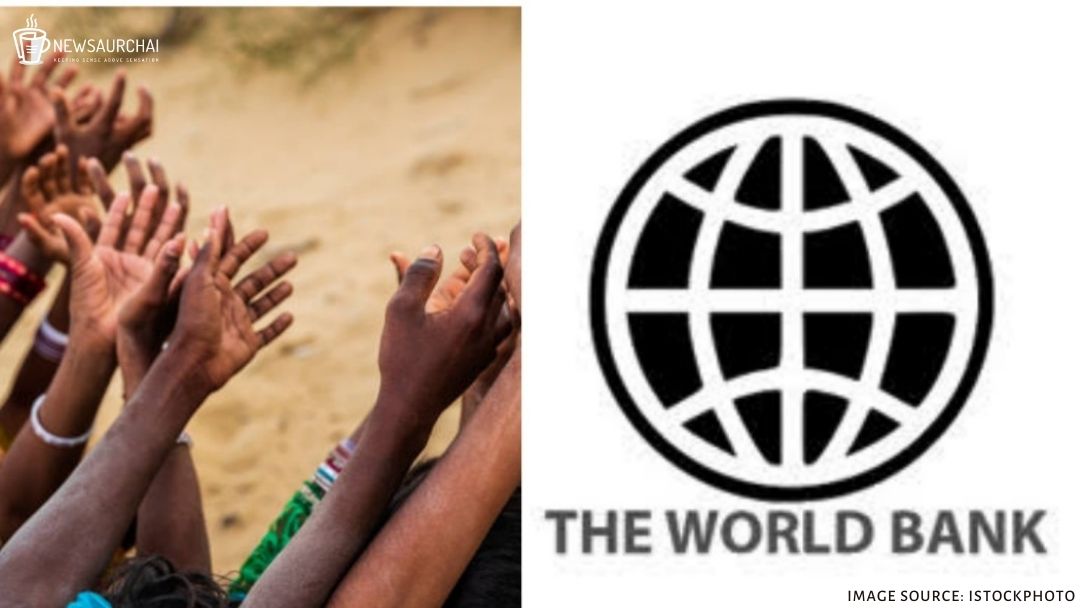
Poverty has been rapidly decreasing over the last three decades; still, more than 1 billion people worldwide live in destitution despite the amalgam of advanced technology and resources of today’s world. Rising inequality and social exclusion further enhance the grievances significantly. In such a setup, the World Bank has adopted the mission to create a world free of poverty via certain ambitious but achievable goals.
They strive to reduce extreme global poverty, that is, people surviving on less than 1.25 dollar per day, to no more than 3 per cent by 2030.
The second overarching goal is to promote shared prosperity, which indicates to the establishment of a sustainable increase of well-being and living standards of the poorer segments of society of every country.
They plan to achieve these targets by promoting environmental, social and fiscal sustainability along with developing sustained social inclusion and limiting the amount of financial debt inherited by future generations.
These goals also hold a promise of progress in non-monetary fields of welfare like nutrition, health, education, ensuring participation in socio-political spheres and availability of essential infrastructures to all segments of society.
However, reducing poverty in the low-income countries of Sub-Saharan Africa and South Asia will serve to be a challenge. In countries like Burundi, Liberia, Madagascar and the Democratic Republic of Congo, the extreme poverty rate is over 80 per cent. Even after reaching the desired 3 per cent rate of extreme global poverty, destitution could still exist in some of the poorest countries or Fragile and Conflict-Affected Situations (FCS).
Severe institutional and policy challenges would force the countries to bear extreme poverty for a more extended period. The lowermost 40 per cent of the social hierarchy pyramid of every nation would undergo an income growth to achieve shared prosperity. The most effective way of reducing poverty, lies in a better labour market engagement in the form of easy access to multiple better-paying jobs.
Nonetheless, the advent of the COVID-19 pandemic has delved a significant blow on the World Bank’s aspirations of eradicating extreme poverty by 2030. About 250 million people are now standing on the threshold of starvation, according to the UN.
The report of UN Special Rapporteur Mr Olivier De Schutter states that the governments have banked on economic growth to lift people out of poverty through Sustainable Development Goals (SDGs) and they can claim progress despite having none, as the World Bank has set the poverty line considerably low.
According to the report, around 176 million people would be pushed into extreme poverty which would further lead to continuous neglect of low-income people, including women, migrant workers and refugees.
De Schutter said, “Growth alone, without far more robust redistribution of wealth, would fail to tackle poverty effectively. Based on historical growth rates, it would take 200 years to eradicate poverty under a 5 dollar a day line and would require a 173-fold increase in global GDP. It is an entirely unrealistic prospect, not least since it does not take into account the environmental degradation associated with the economic growth, or the impacts of climate change on poverty itself.”
He believes that extreme poverty is not only a result of low income, but a collective evil formed out of disempowerment, institutional and social abuse and discrimination. Until an inclusive society is built depending on a rights-based empowering approach, poverty won’t be eradicated.
The World Bank has observed the extreme global poverty is expected to rise for the first time in over 20 years as the result of the pandemic. It is estimated that an additional 150 million people would face extreme poverty by 2021, based on the severity of economic contraction.
According to the Poverty and Shared Prosperity Report, the global poverty rate, which was expected to drop to 7.9 per cent in 2020, would likely hit 9.1 per cent to 9.4 per cent of world population. The pandemic, along with the problems of conflict and climate change, is seemingly taking the World Bank’s goals beyond reach. Without swift, significant and substantial policy action, the global poverty rate would be at about only 7 per cent by 2030.
Unless collective action is taken by the nations and leaders all over the world, and develop an alternate economy post-COVID to find new ways of accommodating labour, capital, skills and innovative ideas, eradicating extreme poverty will be a distant dream. The World Bank calls upon the countries to engage in collective action, which would be supported by the World Bank Group to help the developing countries to work towards a sustainable and inclusive health, social and economic recovery.





